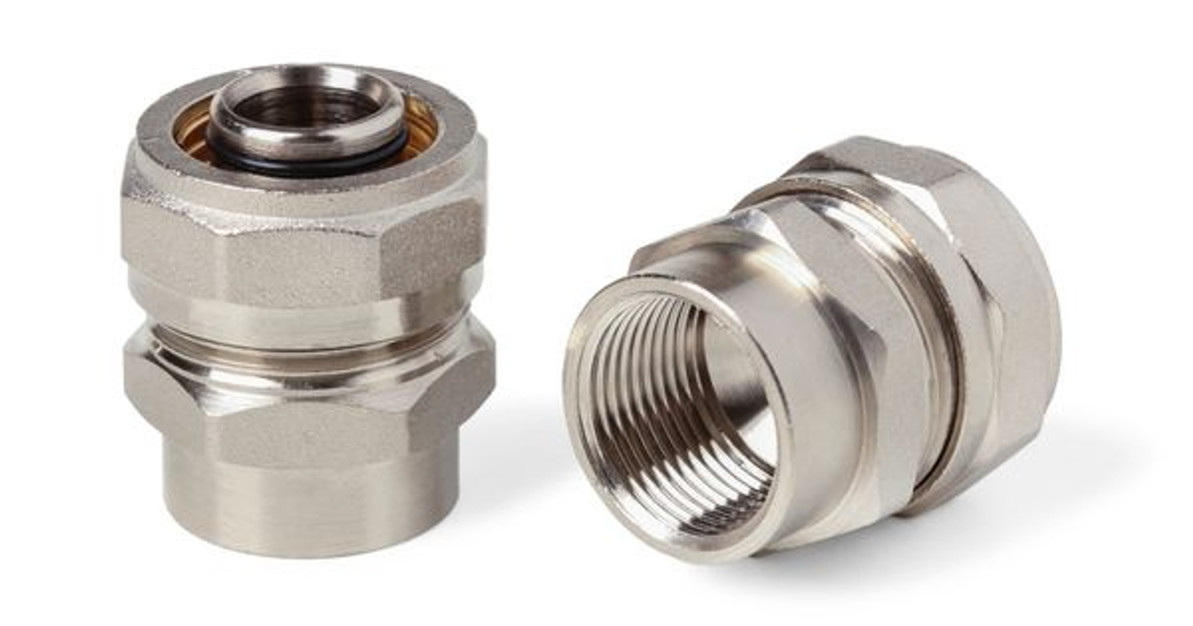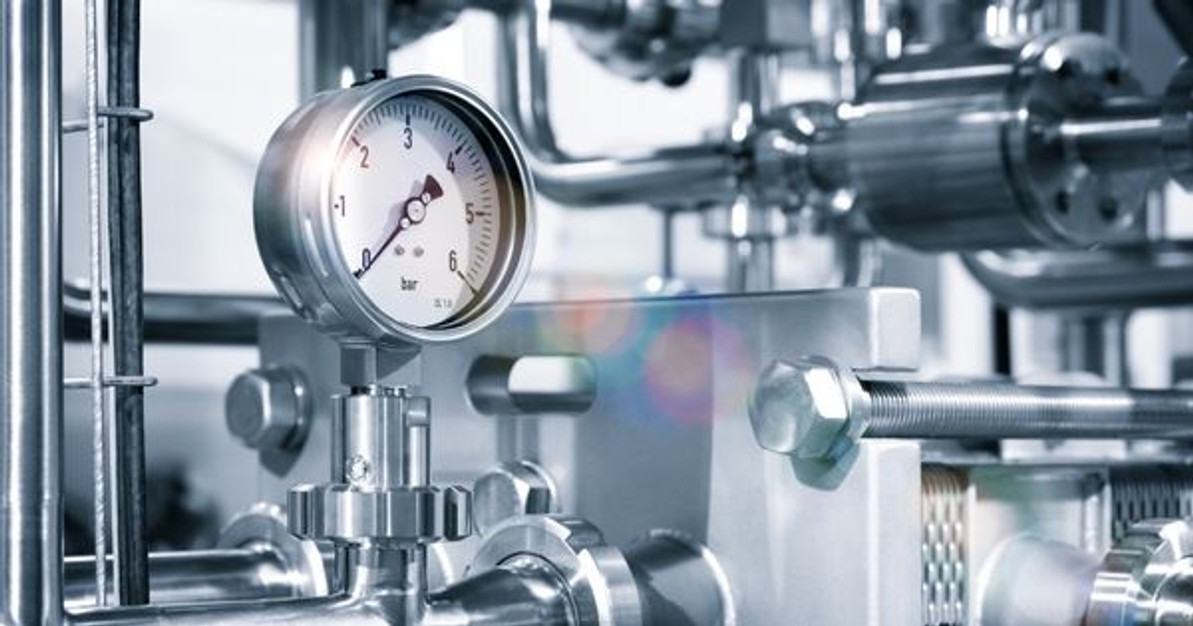 May 1st 2017
May 1st 2017 Sanitary Stainless Steel Fittings: Common Uses
Whether it’s through your fridge at home, cutlery, cookware, or beer brewing equipment, chances are that you’re familiar with seeing stainless steel being used for common, everyday uses. Stainless steel is an extremely useful, hygienic and durable resource that’s used in a variety of industries, ranging from domestic, architectural, transportation, medical, and many more.
Though we’d probably have a difficult time naming every single possible use for our sanitary stainless steel fittings, we wanted to give our readers a good idea of the versatility and usefulness that something like stainless steel offers. As your comprehensive solution for sanitary stainless steel fittings and sanitary tubing, Chemseal provides necessary components for hygienic fluid processes to ensure that nothing gets contaminated when food, beverages or products are being made. Continue reading below to learn a few new things about stainless steel!
In The Kitchen
When most people think about common applications of stainless steel, most people automatically think about their fridge or other modern kitchen appliance gadgets. Even if you don’t have really sleek, modern stainless steel appliances or kitchen islands, chances are you probably still have steel pans, mixing bowls, and utensils, at the very least. Stainless steel has been proven to be very useful in the kitchen, and for more than just its pretty, reflective looks.
Originally, regular ol’ steel was used in many places, including the kitchen. Steel is a strong alloy that doesn’t chip, bend, or crack easily, though it does scratch. While steel does stay fairly shiny after years of use, it does eventually encounter a problem: rusting. Due to stainless steel’s chromium properties, it forms a film of chromium oxide over the surface when exposed to air. The film is non-toxic and prevents the steel from rusting by shielding it from air and moisture. Even if the stainless steel gets cracked, the chromium oxide reforms seamlessly! How convenient.
Stainless steel is also great for preparing and cooking acidic foods because it is non-reactive, unlike its aluminum and iron counterparts. Overall, stainless steel is a perfect fit for the kitchen due to its durable, versatile and worry-free materials.

Architecture and Construction
Stainless steel has long been used to construct buildings of many sizes, especially during the art-deco period. If you look at the upper portion of the Chrysler Building in New York City, for example, you’ll notice that stainless steel was used to create the accents on the upper portion of the building.
Thanks to stainless steel’s strength, flexibility and overall resistance to corrosion, stainless steel is commonplace in modern construction. Stainless steel is used in the exterior cladding for large, high impact buildings, and is also seen in the interiors of buildings in things like handrails, counter tops, backsplashes, and many more interior elements.
Additionally, stainless steel is easily manipulated and welded, has an attractive finish to the eye, and is low maintenance, meaning that it will essentially keep itself clean. When it comes to sustainable building materials, stainless steel is typically one of the primary materials considered, due to the fact that stainless steel is often made up of 90 percent recycled metal. Stainless steel has also help reduce energy consumption by bringing in natural light into a building through a polished or gain finish.
Due to stainless steel’s value, versatility, durability and cleanliness, it is an ideal building material that is seen in famous buildings around the world like the Eurostar Terminal in London’s Waterloo Station, the Helix Bridge in Singapore, and the One World Trade Center in New York City.
Automotive and Transportation
After the rise of the Ford Model T and other early production models, Ford eventually began to use stainless steel in the 1930’s for their varying concept cars. Since then, stainless steel has gradually been used more and more in the automotive industry, traditionally in parts like car exhaust systems, grills, trim, and more. Stainless steel will probably be considered for other structural components in modern-day cars as well, due to stricter emission reduction standards and environmental concerns.
For transportation, stainless steel has historically been used in the construction and structural support of things like ship containers, road tankers, and refuse vehicles. Stainless steel is an ideal material to use when transporting volatile chemicals, liquids or other food products due to its hygienic, stainless qualities. Plus, the high strength of stainless steel allows for thinner containers to save on fuel costs, and its corrosion resistance qualities means less cleaning and maintenance costs. Overall, stainless steel is very cost-effective and useful for the automotive and transportation industries.
Medical Applications
As you may have guessed, stainless steel’s hygienic and corrosion-resistance qualities makes it a great material to use for medical and dental environments. Easily sterilized, stainless steel is used in the construction of things like surgical and dental instruments, kidney dishes and operating tables, and other medical equipment like cannulas, steam sterilizers and MRI scanners.
Stainless steel is also used to make useful medical items like surgical implants and replacement joints such as artificial hips. Stainless steel pins and plates are used to fix broken bones in place, without any worry of contamination or uncleanliness once they’re installed thanks to stainless steel’s hygienic and sterile qualities.
Energy and Heavy Industries
Industries that commonly deal with high heat, toxic and volatile compounds including chemical, oil and gas, rely on the durability and anti-corrosive properties of stainless steel. For industries dealing with heavy chemical use, special grades of extremely durable and resistant stainless steel have been developed for use with enhanced corrosion-resistant properties over a wide range of temperatures. Thus, high-grade stainless steel is very important when it comes to the construction of storage tanks, valves, pipes, and other necessary industrial components.
Learn More About Helpful Stainless Steel Uses From Chemseal
Chemseal is proud to enable many important industries to produce great and safe products, ranging from pharmaceutical drugs to dairy products and everything in between. We know that our stainless steel fittings and sanitary stainless steel parts come in a wide variety of sizes, styles and material grades so that there’s an exact fit for your business operation. Stayed tuned to learn more about additional stainless steel uses, and contact Chemseal today to learn more about how we can help enable hygienic processes for your business!
 May 1st 2017
May 1st 2017 Recent Posts
-
Nov 7th 2022
What Is Food-Grade Stainless Steel Tubing?
Businesses that produce food and beverage products must operate hygienically. Sterile environments a …Nov 7th 2022
-
Oct 11th 2022
Why Sanitary Fittings Are Important for the Medical Industry
Sanitary fittings are useful for many industries. Food and beverage manufacturers have used these to …Oct 11th 2022
-
Sep 23rd 2022
What Is the Max Operating Temperature for Stainless Steel?
Stainless steel is valued in many industrial applications because it’s capable of withstanding high …Sep 23rd 2022



